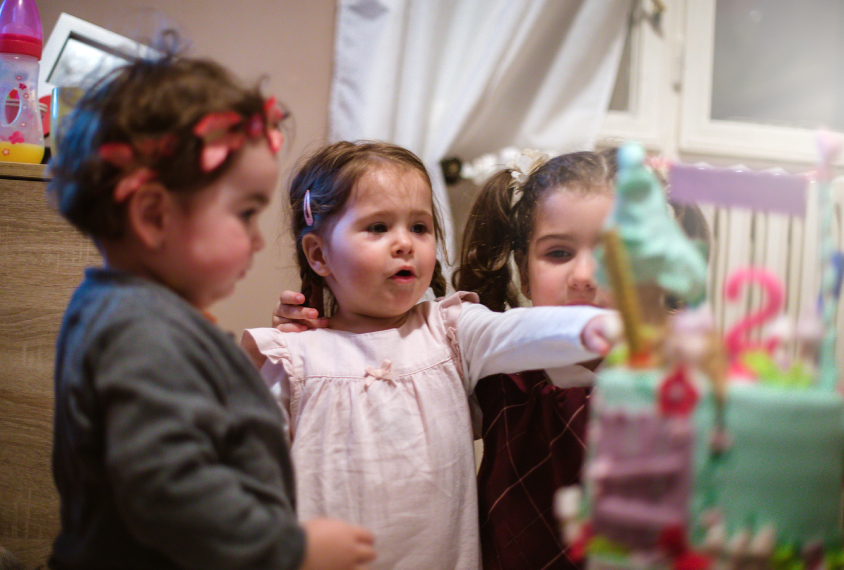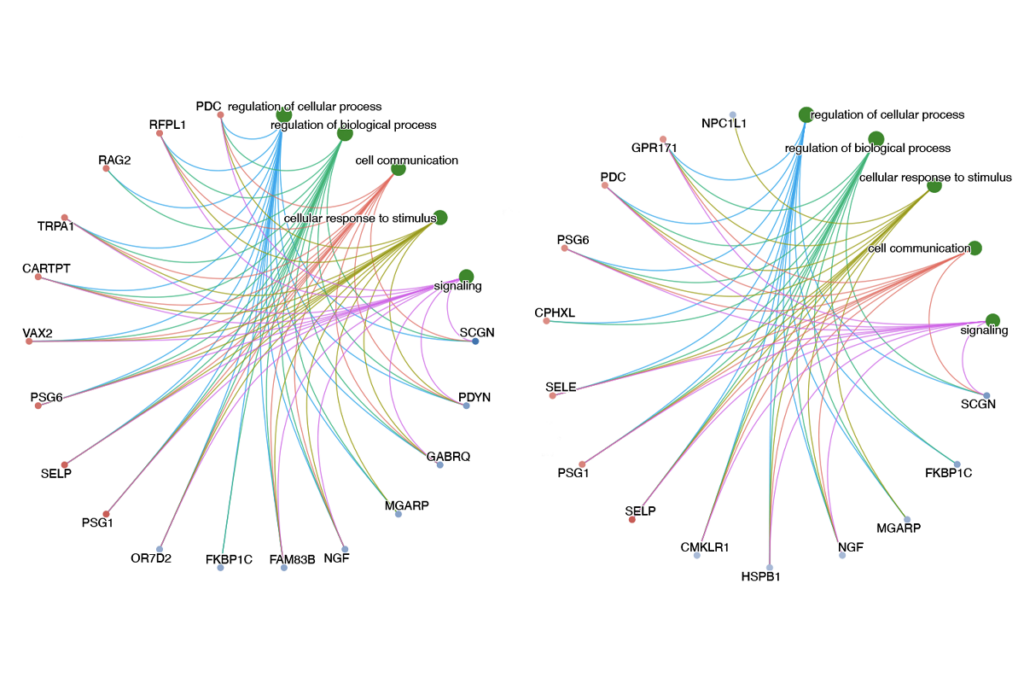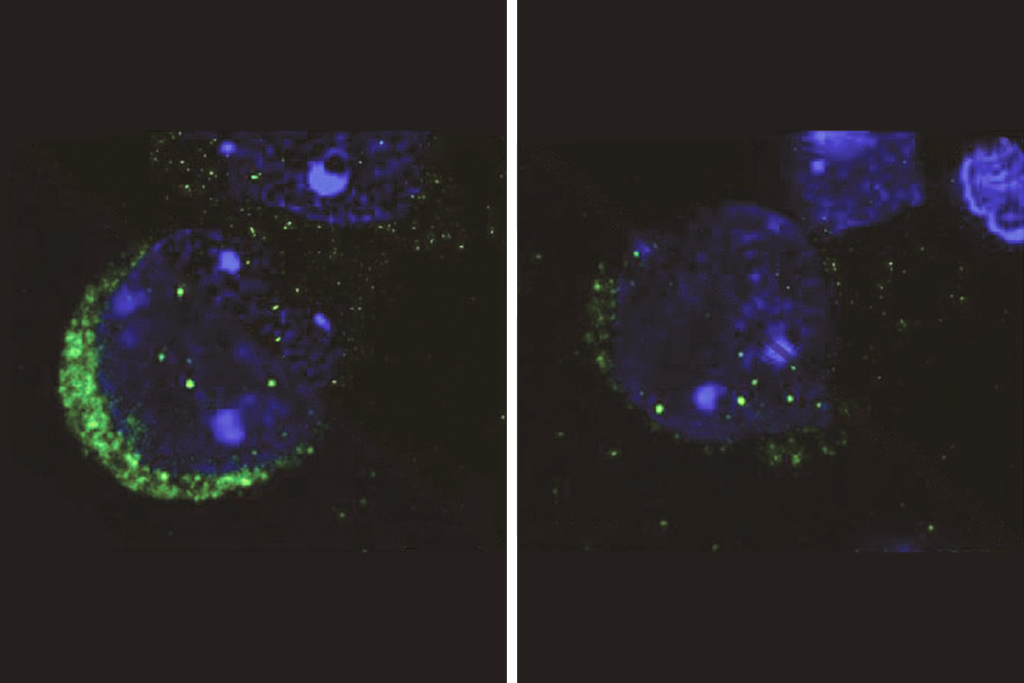
Brain, behavior distinguish autism from language delay
Babies with autism show behavioral and brain features that differ from those of babies with language delay.
Babies with autism show behavioral and brain features that differ from those of babies with language delay1. These findings from a new study hint at different biological origins for autism and language delay.
The results, based partly on brain scans, could help clinicians identify and treat subgroups of children with language problems.
“The diagnoses we use in clinical practice today are entirely based on behavioral observations and lack any grounding in the underlying biology,” says lead investigator Joseph Piven, professor of psychiatry at the University of North Carolina at Chapel Hill.
Children who have autism and language delay show dampened brain activity in two language centers as early as age 1, researchers reported in a 2015 study. Children who have language delay alone do not show this pattern.
In the new study, Piven and his colleagues found that among children who show poor language skills at age 1, those later diagnosed with autism understand and produce speech differently than do those without autism. They also show a different pattern of associations between the size of certain brain structures and language skills.
The findings call for further investigation into differences between autism and language delay, says Helen Tager-Flusberg, director of the developmental science program at Boston University, who was not involved in the study. “These are very exciting and important findings,” she says. “Both the behavioral and [brain-imaging] findings suggest that differences outweigh the similarities.”
First words:
The team looked at 382 infant siblings of children with autism — so-called baby sibs, who are at increased risk for autism — and 143 babies with no family history of the condition. The children are part of the Infant Brain Imaging Study (IBIS), which tracks the early development of baby sibs.
The researchers measured the children’s cognitive and verbal development at ages 6, 12 and 24 months using two standard scales. These scores reflect whether a child has met early language milestones, such as onset of babbling and first spoken words. (Starting to talk late is often the first sign of autism, and communication deficits are a core feature of the condition.)
Diagnostic assessments at 24 months revealed that 86 of the baby sibs have autism; 41 of the baby sibs have language delay but do not meet the criteria for autism. None of the children in the low-risk group have either autism or language delay.
The team then looked at how the children had performed in the language tests at earlier ages. The babies showed no differences at 6 months. At 12 months, when infants typically shift from babbling to speaking, children with autism or only language delay both lagged behind controls. By 24 months, that gap had widened.
The children with autism differ from those with only language delay in one important respect: They are equally skilled at understanding and producing speech. By contrast, the children with language delay, like typical children, are better at understanding speech than at producing it. The results appeared 12 August in Biological Psychiatry.
The findings highlight the importance of tracking language development over time, says Rajesh Kana, associate professor of psychology at the University of Alabama at Birmingham, who was not involved in the study. “This shows the window at which you are looking to study autism can play a significant factor in what you will find,” he says. “If someone is looking at just 24 months or just 12 months, they might get different results.”
Baby brain:
The researchers also looked at brain scans of 46 of the baby sibs with autism and 29 baby sibs with only language delay at 12 months. Although the brain’s main language areas in adults sit on its surface, Piven’s team focused on a less-studied group of interior structures: the amygdala, thalamus and caudate nucleus. These regions are thought to play supporting roles in language development.
In children with language delay alone, smaller volumes of these three regions at 12 months correspond with better language comprehension at 24 months. The children with autism don’t show this relationship.
At age 1, the brains of the children who have both autism and language delay most closely resemble those of children who have autism but typical language skills.
It is unclear how the size of the structures influences or reflects language development. But the results support the idea that language delay in baby sibs is a distinct condition, and not just a mild form of autism, says study co-author Meghan Swanson, a postdoctoral fellow in Piven’s lab.
“We found [autism and language delay] really are distinct in some ways, and I think that has repercussions for how we think about treatments for these infants,” Swanson says.
The researchers plan to examine the nerve tracts and brain areas most closely associated with language in the two groups of children. They also plan to study the children as they reach school age, when other language problems are likely to appear.
References:
- Swanson M.R. et al. Biol. Psychiatry Epub ahead of print (2017) Abstract
Recommended reading

New tool may help untangle downstream effects of autism-linked genes

NIH neurodevelopmental assessment system now available as iPad app

Molecular changes after MECP2 loss may drive Rett syndrome traits
Explore more from The Transmitter

Organoids and assembloids offer a new window into human brain
Who funds your basic neuroscience research? Help The Transmitter compile a list of funding sources
